City leaders have had a tough time over the years figuring out just what to do with Fourth Street. In hindsight, the best answer might have been simply nothing, but today we’re left with a legacy of failed urban interventions that have each made their mark on Louisville’s traditional entertainment and shopping corridor.
Fourth Street today is slowly reawakening from a long sleep, but half a century ago, the community saw its once vibrant street threatened by suburban sprawl and the rise of the shopping mall. At the time, urban theorists supposed making the city more like the suburbs would draw people Downtown.
Once lines with many theaters and department stores, Fourth Street was where teenagers gathered to cruise on Friday evenings and where mothers would drop kids off at the theater and head down to shop. With the opening of Mall St. Matthews and Showcase Cinemas on Bardstown Road in the 1960s, the shopping and theaters on Fourth Street slowly dwindled.
In 1960, the city’s first experimental pedestrian mall was installed on Guthrie Street. The Guthrie Green Still exists today, but the larger mall it inspired next door is long gone. The Encyclopedia of Louisville noted the plan was the brainchild of the Louisville Central Area (LCA), itself once a part of the Louisville Chamber of Commerce’s Downtown Committee.
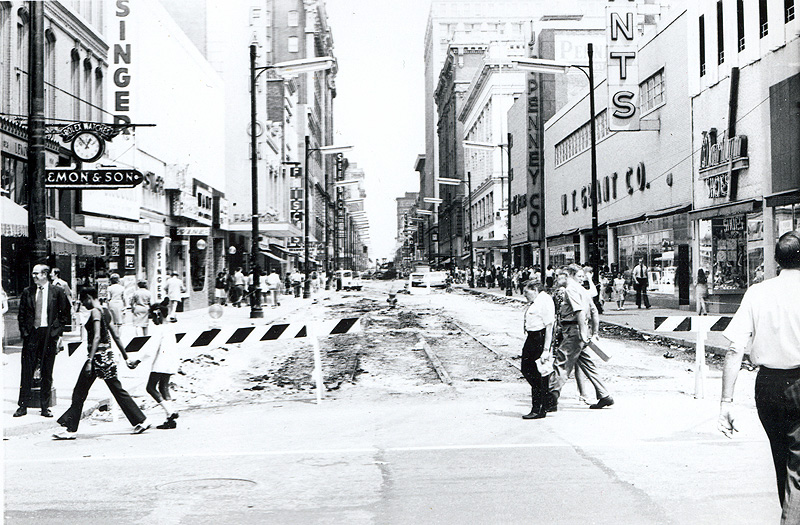
The three-block River City Mall opened in 1973 between Liberty And Broadway and was extended north to Market Street in 1977 with the opening of the Convention Center. It was designed by Johnson, Johnson, & Roy landscape architects and Ryan Associated Architects. The Encyclopedia of Louisville suggested the River City Mall helped to keep Louisville’s central business district viable even though it failed to rejuvenate Downtown.
While stores continued to close on Fourth Street, the Galleria, a suburban-style shopping mall was inserted into the mall between Liberty Street and Muhammad Ali Boulevard in 1983. An extensive Velocity / Metromix article says the Galleria cost a whopping $144 million (adjusted to $308 million in modern dollars) and was meant to provide a suburban experience in the core of Downtown.
While civic leaders were busy suburbanizing Downtown, surrounding blocks were seriously damaged as block upon block was demolished for parking. What defined the suburbs if not the parking lot?
Ideas for the Galleria date to the late 1960s when the city commissioned Victor Gruen Associates to put together a plan in 1968. Gruen is credited as the father of the shopping mall and opened the first open air shopping mall in Detroit in 1954 followed by the first enclosed mall in 1956. Due to the widespread adoption of his ideas, The New Yorker declared that “Victor Gruen may well have been the most influential architect of the twentieth century.”
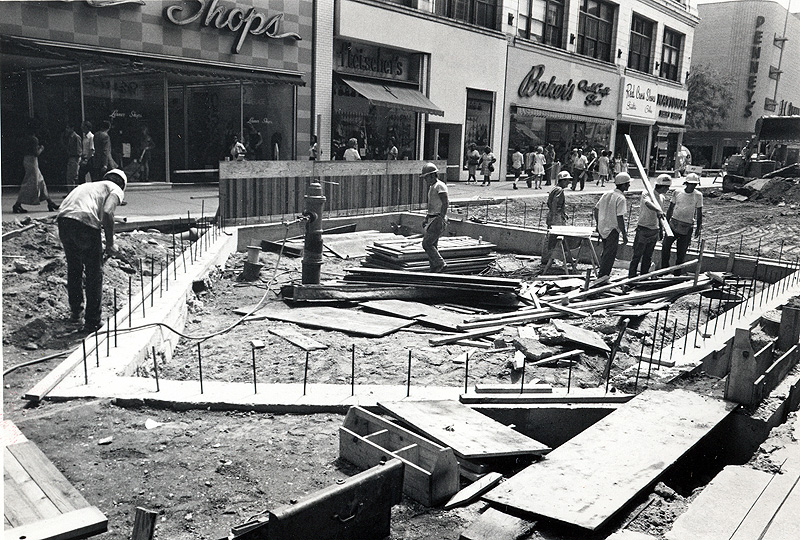
Gruen’s plan faltered in the early 1970s but community leaders picked it up again in 1975, eventually leading to the Galleria and office tower complex designed by Skidmore, Owings, Merrill. In the process, two significant historic structures, the Atherton Building and the Will Sales building were destroyed despite protest from city residents.
The River City Mall underwent a multi-million dollar renovation funded by TARC in the late 1980s that allowed trolley-buses to traverse the stretch. The transitway was designed by Barton Aschman Associates. It was finally abandoned in 1996 and Fourth Street was opened up to traffic except for one block containing the Galleria.
At some point, it occurred to community leaders that suburbanizing Downtown wasn’t working and the (mostly vacant) Galleria was closed as well. In 2004, 4th Street Live! opened in the footprint of the old mall and the last remaining block of the River City Mall was again opened to traffic.
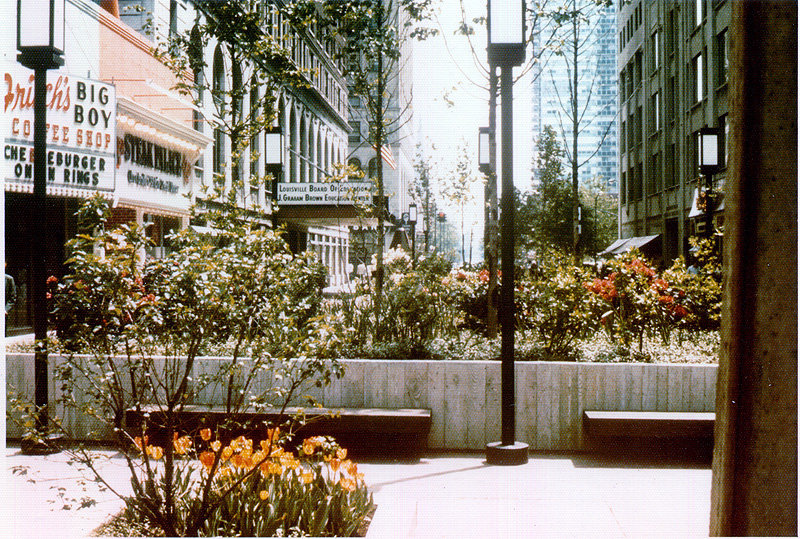
Looking at these old photos of the River City Mall, it strikes me just how lively a dying Downtown Louisville really was. It’s also interesting how pleasant the photos make the mall look. I think the failure of the River City Mall stems from a misunderstanding of how a pedestrian mall is meant to be used. Pedestrian malls do not revitalize failing cities, they are amenities of well-functioning cities.
In order for a pedestrian mall to work well, a critical mass of density much be achieved with residents able to use the mall space by walking or taking transit there. Pedestrian malls are ineffective when expected to function in a suburban paradigm and will always fail. Simply put, pedestrian malls are pedestrian spaces whereas suburban malls are spaces for cars. That’s why a pedestrian mall might work in Europe or New York City, but will fail in Louisville. You may find this article from Next American City on pedestrian malls interesting as well.
What are your memories of the River City Mall, before and after? Do you recognize any businesses or long-gone buildings in the area? Tell your stories of the tumultuous evolution of Fourth Street in the comments.
More from Broken Sidewalk:
- Grandeur of Fourth And Chestnut Past
- Louisville Clock Approaching The Finish Line
- Downtown Qdoba Under Construction
- Inside Fourth Street’s Caperton Block
- Big Blank Wall on Chestnut Street

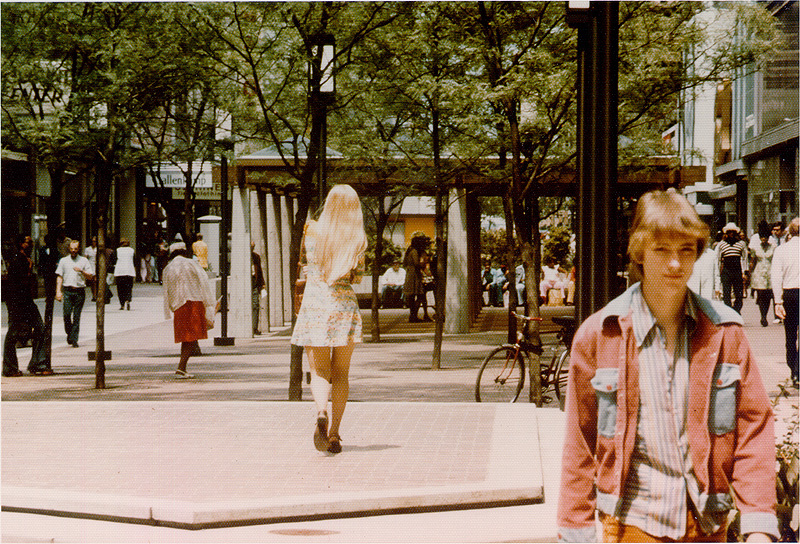
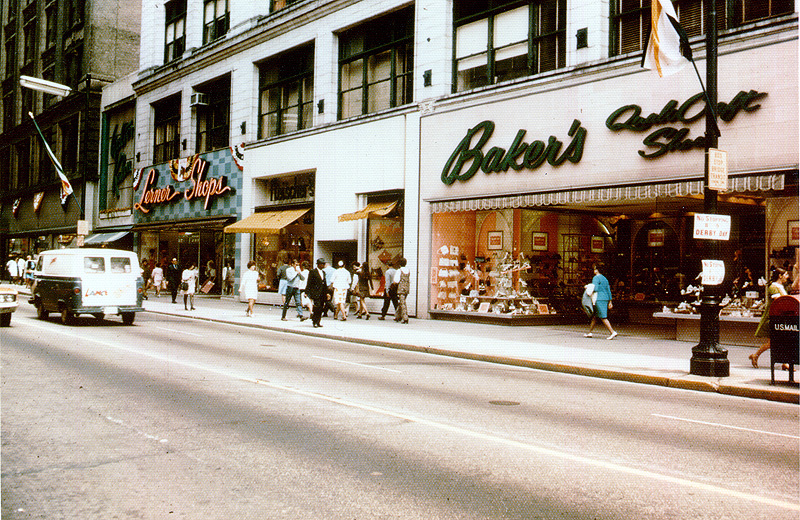
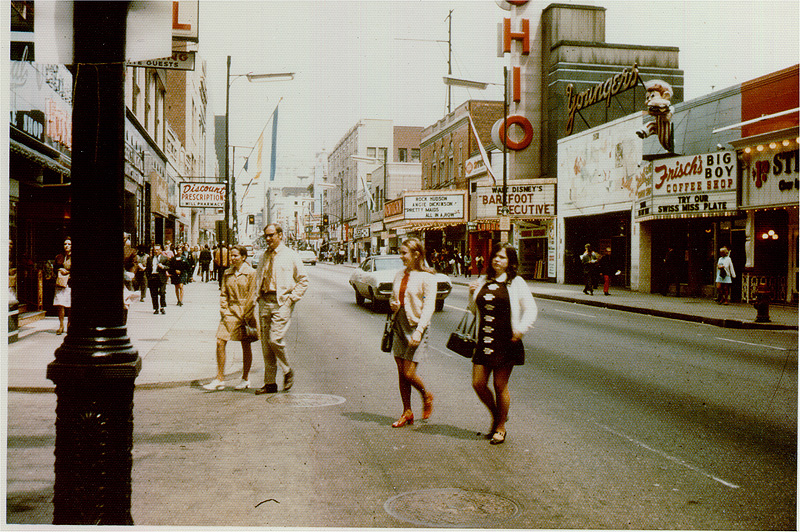
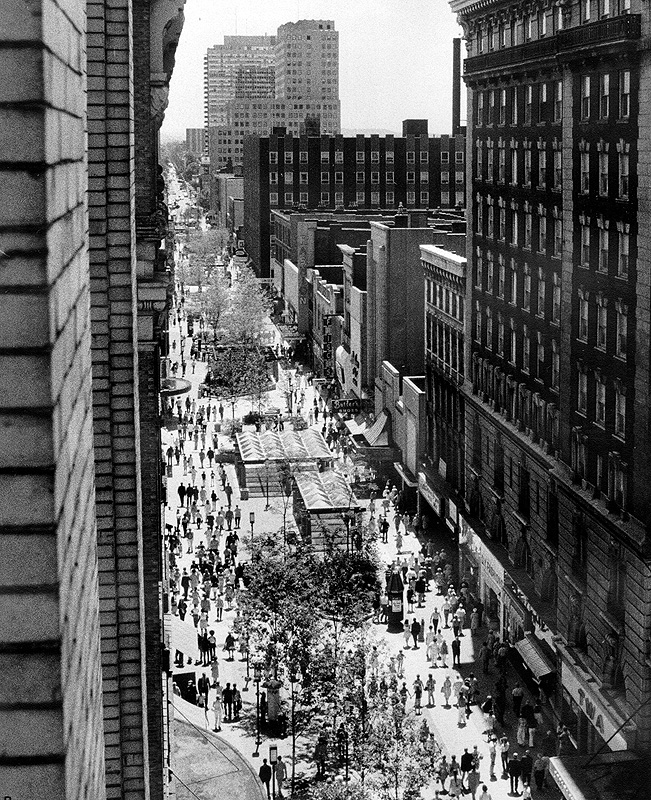




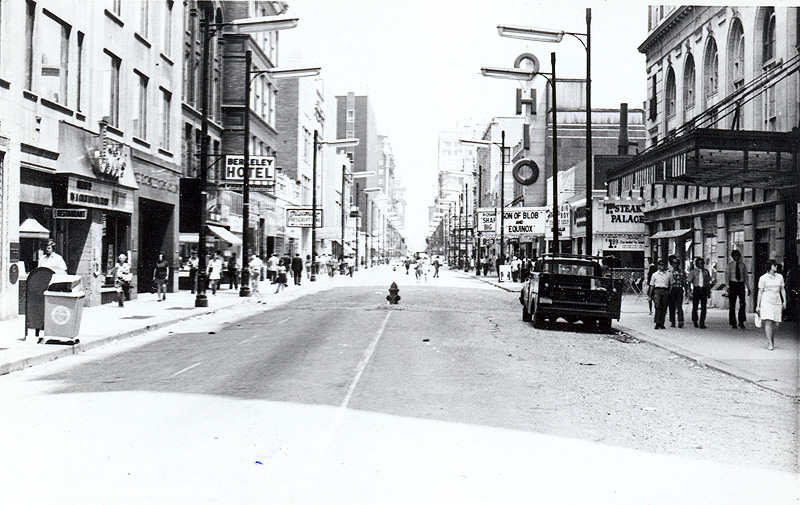


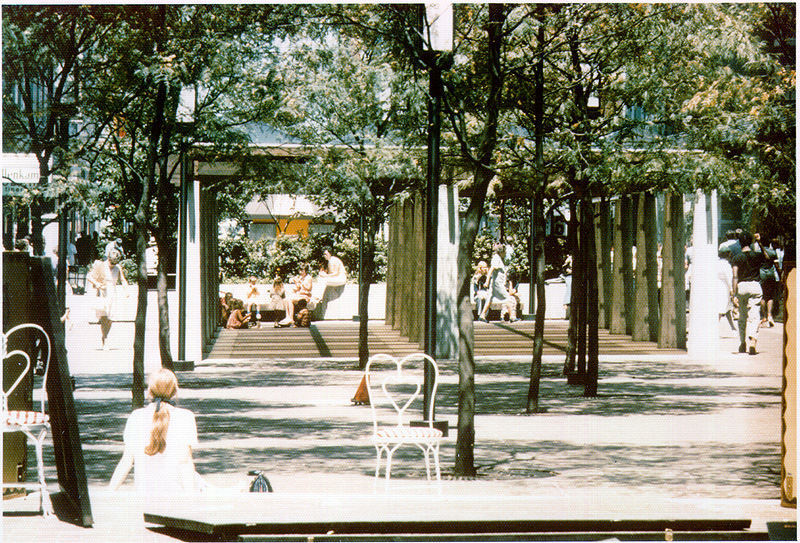
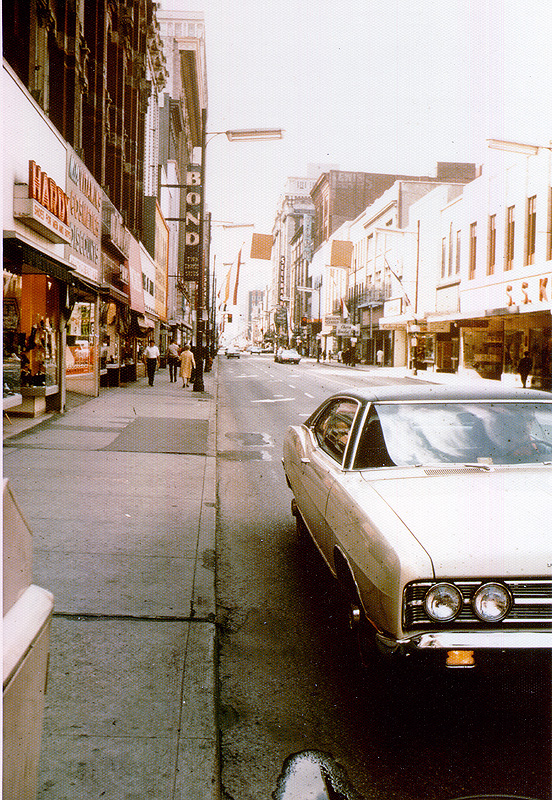
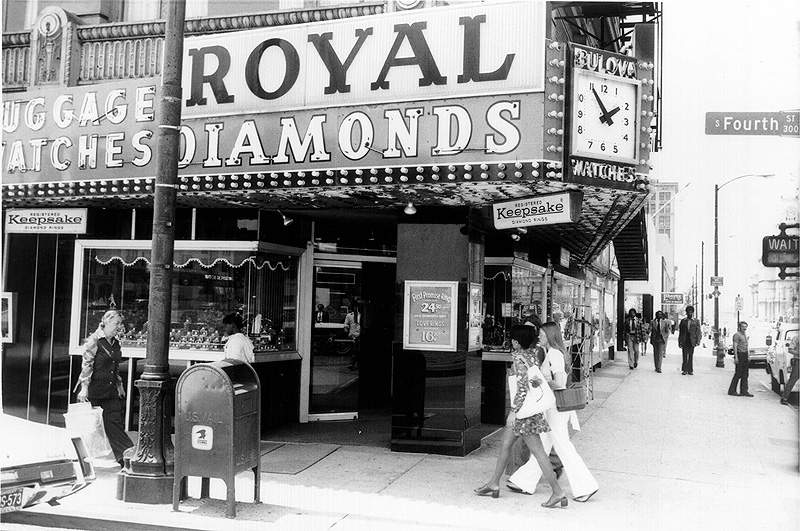
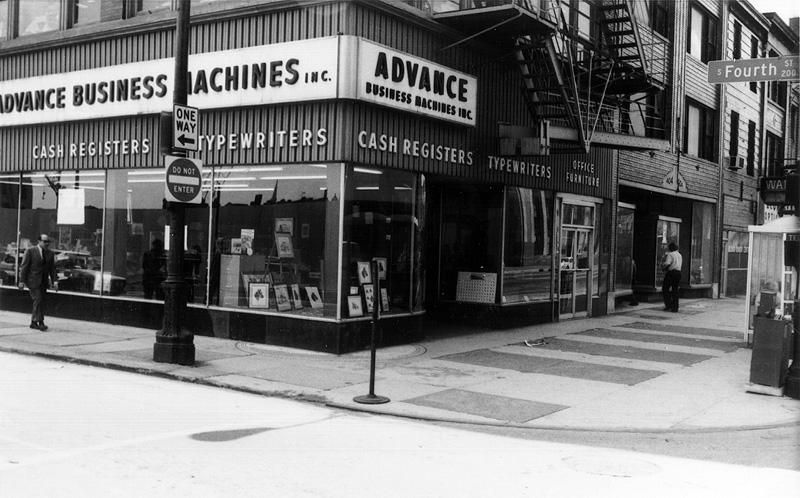
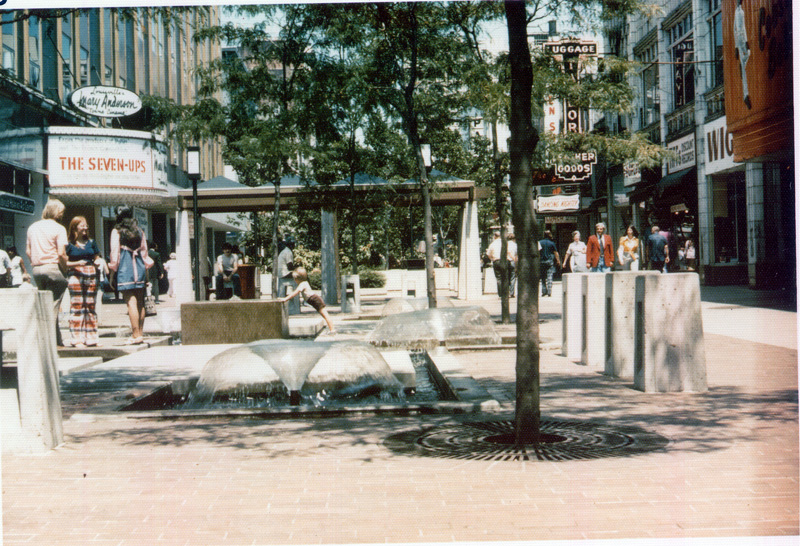

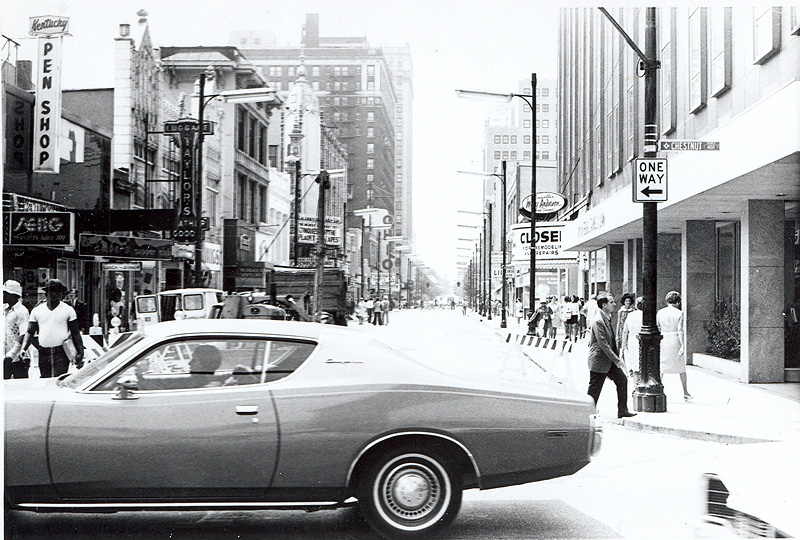
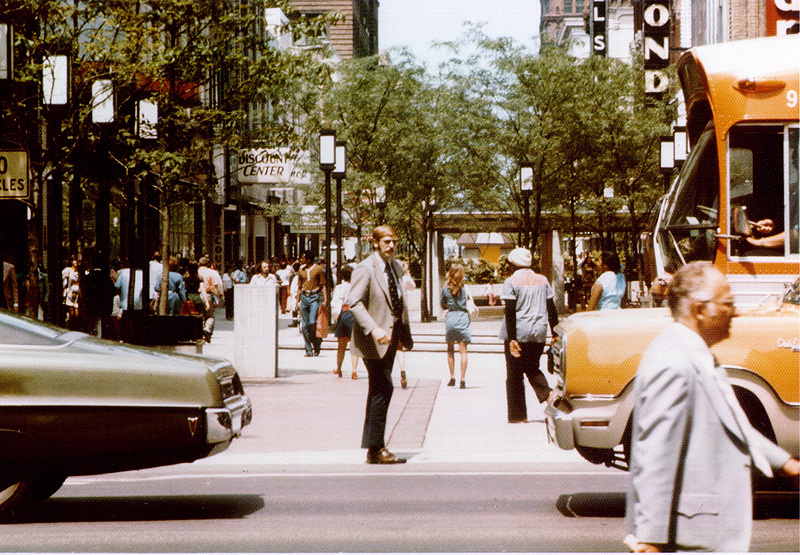

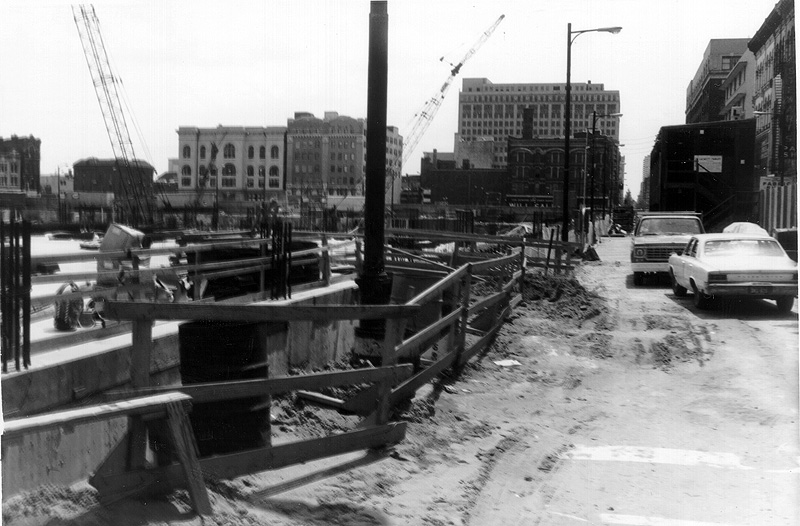

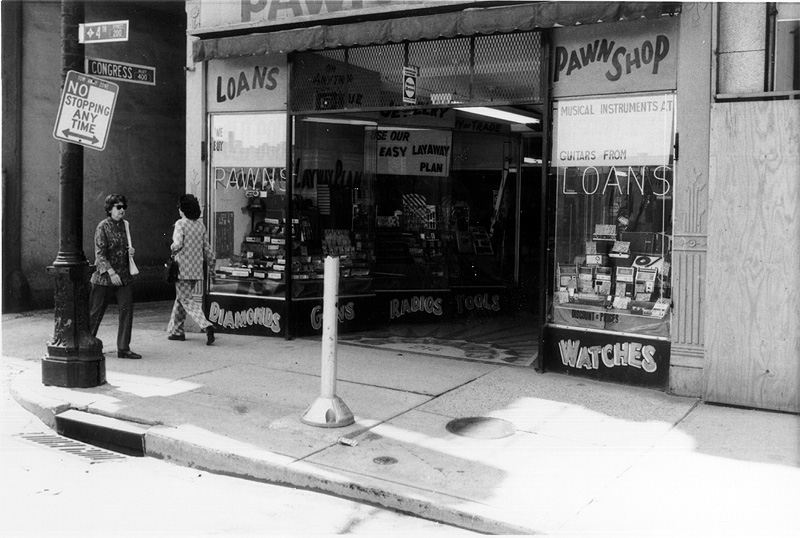
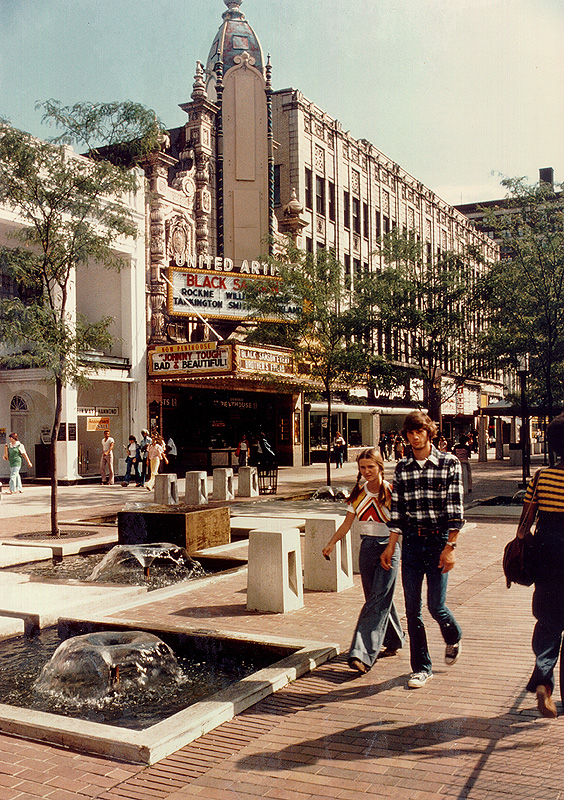

Hard to know where to start here Branden..first of all you did a great job of noting the many firms that the leaders of Louisville employed to bring their ploy to Fourth St. years after other markets determined their work to be a failure. You are right concerning Guthrie Green being the start of the mistakes when they closed this important cross town artery for a failed plaza…which exists today nearly a half a century later, and is called by city planners on the inside "Guthrie Ungreen" today. At one point, Louisville was the largest city in the US that continued to have its central most retail corridor of its downtown still closed as a ped mall. It was only 10 years ago where Fourth St. had 5 different traffic, ped, bus usage patterns over 7 blocks. I remember Paul Bather, a Louisville alderman, stating in the CJ that he ignored the signs and drove (when they finally did gut the mall for use of the trolley only)on Fourth St. anyway. Fourth St. has been the most mismanaged mangle of a mess for decades, mostly during the Abramson administration. Only when they finally reopened (for the most part)the street to become what it was intended to be, a street, did it finally start to recover. You are right. It is amazing to me that Fourth St. survived these disasters for decades as it took a long time to run off everyone before it reached a bottom around the late 90's. You and I can complain about the corporate environment of Fourth St. Live however I must say the street was in its death throes and without it we might be looking at downtown Evansville instead.
Personnaly I’m not a fan of 4th St Live but Louisville needs a centralized cluster of bars/restaurants and retail to attract conventions. Your midwest trucking show, Hot Rod Nationals, and Future Farmers of America crowds flock to generic and comfortable corporate brand names. If they were smart @ 4SL they would put in a few more faux local attractions like the out of town owned Maker’s Mark lounge. A big opportunity was missed when they opened the Sports and Social club instead of the Churchill Downs branded off-track betting sports bar that would have been a natural fit. The Louisville Slugger Cafe or Hillerich and Bradsby Lounge would have also worked. Anything but the most generic sounding brand name in the world: The Sports and Social Club.
Agreed concerning the Sports and Social Club…it is a makeshift renovation of the closed bowling alley. What could have been a great opportunity for a locally branded venue was wasted, not to mention the $950,000 of taxpayer money.
What a great article! My fellow city dwellers from my earliest years look like another species. Ah, the 70s.
"In order for a pedestrian mall to work well, a critical mass of density much be achieved with residents able to use the mall space by walking or taking transit there. Pedestrian malls are ineffective when expected to function in a suburban paradigm and will always fail. … That’s why a pedestrian mall might work in Europe or New York City, but will fail in Louisville."
Reading this paragraph, I came away thinking you were arguing that we don't have sufficient population DENSITY for a successful pedestrian mall. I don't think that's precisely what you're saying, and would be easily disproven anyway – e.g. Iowa City, Iowa has a fantastic, crackling ped mall.
Rather, I think you're arguing that you need a /mixed use neighborhood/ to have a working ped mall. Some people need to automatically populate the street without any special effort (e.g. driving, parking).
How much residential was near 4th street over the time period of this article? Anyone know? Residential is important because it peaks at different times from the office crowd. If you look at Luigi's on Main Street – a great restaurant, btw – you definitely see out-the-door lines at 12-1. But the trickle of tourist business from the H&B factory up the street sustains decent shifts for their workers, without which I don't' think it would be as successful a business. Okay, so tourist =/= residents, but the point is they have different traffic peaks, which is important for businesses, and important for street life.
What a great article! My fellow city dwellers from my earliest years look like another species. Ah, the 70s.
“In order for a pedestrian mall to work well, a critical mass of density much be achieved with residents able to use the mall space by walking or taking transit there. Pedestrian malls are ineffective when expected to function in a suburban paradigm and will always fail. … That’s why a pedestrian mall might work in Europe or New York City, but will fail in Louisville.”
Reading this paragraph, I came away thinking you were arguing that we don’t have sufficient population DENSITY for a successful pedestrian mall. I don’t think that’s precisely what you’re saying, and would be easily disproven anway – e.g. Iowa City, Iowa has a fantastic, crackling ped mall.
Rather, I think you’re arguing that you need a /mixed use neighborhood/ to have a working ped mall. Some people need to automatically populate the street without any special effort (e.g. driving, parking).
How much residential was near 4th street over the time period of this article? Anyone know? Residental is important because it peaks at different times from the office crowd. If you look at Luigi’s on Main Street – a great restaurant, btw – you definately see out-the-door lines at 12-1. But the trickle of tourist business from the H&B factory up the street sustains decent shifts for their workers, without which I don’t’ think it would be as successful a business. Okay, so tourist =/= residents, but the point is they have different traffic peaks, which is important for businesses.
Iowa City's pedestrian mall works because of the 30,000 largely residential students at the university of IOWA next door. Another reason is that the locals and business leaders have embraced the concept, giving the area a dense consumer base. I went to a wedding near the convention center/Marriot hotel which was in the heart of the pedestrian mall. The playgrounds in the middle of the street were a nice touch. The amount of anti-downtown bias throughout Jefferson county/Louisville metro is seriously detrimental to the long term economic health of the entire Louisville metro area. The next mayor needs to make progress on this issue.
I was born in 1973, and first encountered the mess that was 4th street in the guise of the Galleria. I recall my first sight of the building, and my reaction… “Who the hell thought it was a good idea to stick a SHOPPING MALL in the middle of the damn STREET?”
I worked at the Seelbach and would sometimes trek over on my lunch hour, to shop the sales at the dwindling stores. I could hit three or four in thirty minutes, including time to shop, try on, and ring up- the businesses were that dead. I remember the book store people seemed so excited to see a live human that they were all over me. “May I help you find something?” every thirty seconds. Eventually I stopped going- not that I didn’t enjoy uninterrupted customer service, it was just that the mall was so… depressing. Empty stores gaping at you, echoing ghostly corridors on the way to the parking garage… it was just so very sad.
Fourth Street, the River City Mall, Fourth Street Mall, Fourth Avenue Mall, Fourth Avenue, and finally, again, Fourth Street, are derserving of a book rather than a blog entry, but you've done a really great job for the introduction. Like Barhorst, I don't know where to begin. I was a not-yet-old-enough-to-drive teenager in the RCM's early years. Late at night we'd ride our bikes along the abandoned blocks with some boarded up buildings. I knew 4th Street as a kid from going to Stewarts Books and Durlauf's Music with my grandmother, and going to Stewarts Department Store and Frisch's for the Christmas Parade. Ten years later I stood with preservationists in front of the Will Sales Building (as well as the old Savoy Theater down at 2nd) as the wrecking ball needed more than the usual power to destroy that building at 4th and Liberty. Gosh, I could go on and on. I'll see what others write.
The talk in Indianapolis is now of closing off the circle from traffic. It sounds like despite the advice from planners, they are going to go ahead with it…definitely doing a test run for the month of August. It concerns me. However, Indy’s dt is different than louisville’s because of the huge influx of convention business which is the only reason the downtown retail/restaurants are successful. Any thoughts on what closing the circle would do? Similarities here?
I was from Mobile, Alabama in 1971 and was transferred to Louisville to manage the Baker’s shoe , downtown Louisville. That was at the onset of the new pedestrian mall.
A country boy was impressed.
I didn’t think about the big problem, lack of convenient parking.
My wife worked at Jewish Hospital, which also had no parking, so it wasn’t a new problem. I enjoyed the atmosphere of the mall area, and it was problem all that would save a downtown change store during the uprising of suburban malls. They mostly were built at on blank canvas land and the theme of parking near the store, especially in inclement weather , took hold, and still is strong in most cities, except where demographics change.
Almost 50 years later when my family was there, I imagine many stores close in downtown as well as in suburban malls. The company I worked for filed bankruptcy in the 90s